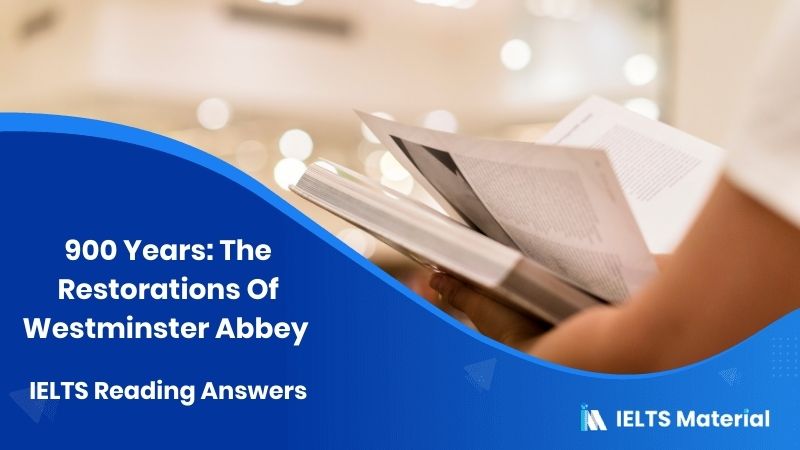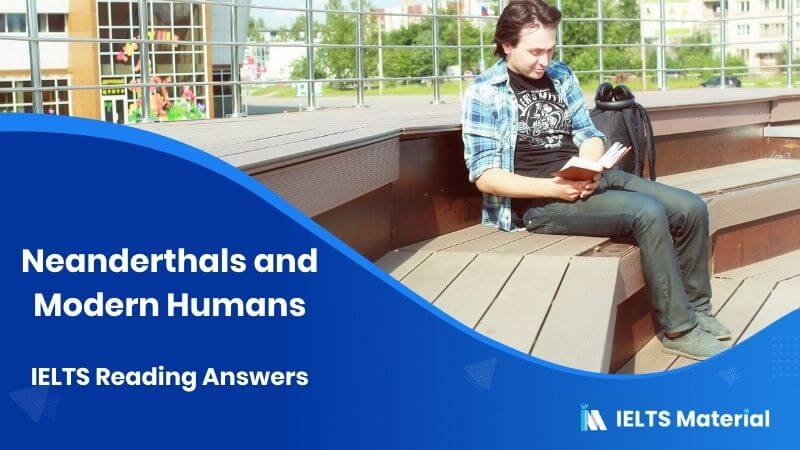A Brief History of London Underground - IELTS Reading Answers
8 min read
Updated On
-
Copy link
This article is based on the IELTS reading answer topic 'A Brief History of London Underground.'
Table of Contents

Limited-Time Offer : Access a FREE 10-Day IELTS Study Plan!
A Brief History of London Underground is a real Reading test passage that appeared in the IELTS. To perform well, it is essential to understand the techniques for approaching and addressing the different question types in the Reading Module.
The Academic Reading passage, A Brief History of London Underground, is an IELTS reading passage that consists of 13 questions. There are sets of questions in the IELTS passages, each involving the completion of a specific task.
So, let’s see how easy this passage is for you and if you’re able to make it in 20 minutes. If not, try more IELTS reading practice tests from IELTSMaterial.com.
The question types found in this passage are:
- True/False/Not Given IELTS Reading (Q. 1-6)
- IELTS Reading Multiple Choice Questions (Q. 7-10)
- IELTS Reading Sentence Completion (Q. 11-13)
Check Out – IELTS Reading Skills for High Bands (Target BAND 8+)
Reading Passage
A Brief History of London Underground


Questions 1-6
Do the following statements agree with the information given in the Reading Passage?
TRUE – if the statement is true according to the passage
FALSE – if the statement is false according to the passage
NOT GIVEN – if the information is not given in the passage
1 More than a billion commuters use London Underground every day.
2 London Underground would not be considered a unique concept were it to be built today.
3 In the 19th century, railway companies were not allowed to build stations within central London.
4 Charles Pearson’s London Underground plan was a precursor of his Fleet Valley rail tunnel idea.
5 The first section of the Metropolitan District Railway, which opened in 1868, took five years to complete.
6 The British government promised great financial returns to private investors to convince them to fund London Underground.
Questions 7-10
7 During the first year of its operation, the Metropolitan Railway
A encouraged passengers to grow beards to block the smell.
B was not particularly successful.
C had more than 11 million passengers.
D was as bad as it is nowadays during the summer months.
8 At the end of the 19th century,
A London Underground stopped using shallow tunnels.
B a new London Underground line was completed.
C a new method of moving trains with electricity was invented.
D the City and South London Railway were established.
9 The Victoria Line
A was originally named the Viking Line.
B was the first London Underground line to use electric traction.
C was the fourth London Underground line to be built.
D was built more than 70 years after its predecessor.
10 The London Passenger Transport Board
A replaced the private companies that previously owned London Underground.
B released the first diagram of the Underground map in 1933.
C was established by private developers.
D controlled most of London’s transport services.
Questions 11-13
11 Since 2003, London commuters have been able to listen to 11 ………………… in and outside London Underground stations.
12 London Underground not only attracted a lot of business to London but also helped it to become a 12 ………………….
13 London Underground does have its 13 ………………….. but it’s still a unique and important cultural phenomenon.
Want to improve your IELTS Academic Reading score?
Answers of A Brief History of London Underground Reading Answers With Location and Explanations
Don’t miss the answer key for the A Brief History of London Underground IELTS Reading passage, complete with detailed explanations, and prepare to score a high IELTS Reading band score.
1 Answer: False
Question type: True/False/Not Given
Answer location: Paragraph 11
Answer explanation: In the eleventh line, it is stated that London Underground achieved its next important milestone, reaching 1 billion passengers per year. These lines suggest that the London underground witnessed around 1 billion passengers per year. Thus, the statement contradicts the information, so, the answer is False.
2 Answer: True
Question type: True/False/Not Given
Answer location: Paragraph 2
Answer explanation: Paragraph 2 illustrates that the idea of an intricate train network running underneath a vibrant and heavily populated city like London might not be such a novelty in contemporary society, but it certainly was one back in the early 19th century when it was first conceived. It is evident from these lines that London underground wouldn’t be considered a unique concept were it to be built today. Thus, the statement agrees with the information, so, the answer is True.
3 Answer: True
Question type: True/False/Not Given
Answer location: Paragraph 8
Answer explanation: Paragraph 8 illustrates that this changed in 1933 when all of those companies were nationalized and merged to form the London Passenger Transport Board, which controlled London’s railway, tram, trolleybus, bus, and coach services. We can deduce from these lines that in the 19th century, railway companies were not allowed to build stations within central London. Thus, the statement agrees with the information, so the answer is True.
4 Answer: False
Question type: True/False/Not Given
Answer location: Paragraph 3
Answer explanation: Paragraph 3 states that Charles Pearson, the man who originally envisioned a Fleet Valley rail tunnel just fifteen years after the first steam passenger service was opened in 1830, couldn’t have come up with his plan for what was to become London Underground at a better time. These lines suggest that Charles Pearson envisioned a fleet valley rail within 15 years after the first steam passenger service was opened, he couldn’t have come up with another plan for what was to become the London underground. Thus, the statement contradicts the information, so, the answer is False.
5 Answer: Not Given
Question type: True/False/Not Given
Answer location: Paragraph 4, line 2
Answer explanation: The 2nd line of the 4th paragraph states that Five years later, in 1868, the first section of the Metropolitan District Railway (now incorporated into the District and Circle lines) followed, running from South Kensington to Westminster. These lines suggest that in 1868, the first section of the metropolitan district railway was incorporated into the district and circle lines. However, there’s no reference to the fact that it took five years to complete the first section of the metropolitan district railway. Thus, the answer is Not Given.
Master Academic Reading with our IELTS Reading guide for high scores on passages like ‘A Brief History of London Underground Reading Answers’!
6 Answer: Not Given
Question type: True/False/Not Given
Answer location: Paragraph 4, line 3
Answer explanation: The 3rd line of the 4th paragraph states that Within the first fifty years, much of what is known as Zone 1 of the London Underground system today would be built, all funded by private developers. (Unfortunately for them, none would get the financial returns they had been promised.). In these lines, it is mentioned that none of them received the financial returns they had promised. As a result, there’s no reference to the fact that the British government promised great financial returns to private investors to convince them to fund London Underground. Hence, the answer is Not Given.
7 Answer: C
Question type: Multiple Choice Question
Answer location: Paragraph 5 – 6
Answer explanation: In paragraph 5, it is stated that in 1863, with the opening of the Metropolitan Railway, which ran between Paddington (called Bishop’s Road at the time) and Farringdon, serving a total of eight stations. In the 2nd line of paragraph 6, it is mentioned that Nevertheless, the line was a smashing success from the very beginning, with more than 11 million passengers in just the first year. According to these lines, the first metropolitan railway began its operation in the year 1863 by serving a total of 8 stations and in the very first year of its operations, the railway achieved huge success with more than 11 million passengers. Thus, it’s clear that during the first year of its operation, the metropolitan railway had more than 11 million passengers. Hence, the answer is C.
Unlock Remaining Explanations
8 Answer: B
Question type: Multiple Choice Question
Answer location: Paragraph 6, line 2
Answer explanation: The 2nd line of the 6th paragraph states that the second spate of construction works arrived with the development of electric traction at the end of the 19th century, which meant that trains no longer had to run through shallow tunnels to allow room for the steam produced by the engines to escape. These lines suggest that at the end of the 19th century, a new London underground line was completed. Hence, the answer is B.
9 Answer: D
Question type: Multiple Choice Question
Answer location: Paragraph 7, line 2
Answer explanation: The 2nd line of the 7th paragraph states that Surprisingly, it would take until 1968 for an entirely new line to open again: the Victoria Line (provisionally named the Viking Line), which was followed by the Jubilee Line eleven years later. We can deduce from these lines that the Victoria line was provisionally known as the Viking line, which was built more than 70 years after its predecessor. Hence, the answer is D.
10 Answer: A
Question type: Multiple Choice Question
Answer location: Paragraph 8, line 2
Answer explanation: In the 2nd line of the 8th paragraph, it is mentioned that this changed in 1933 when all of those companies were nationalized and merged to form the London Passenger Transport Board, which controlled London’s railway, tram, trolleybus, bus, and coach services. (Coincidentally, 1933 was also the year the first diagram of the iconic Underground map was first presented by Harry Beck.) The London Passenger Transport Board itself was nationalized in 1948. These lines suggest that the London passenger transport board replaced the private companies that previously owned London underground. Hence, the answer is A.
11 Answer: busking
Question type: Sentence Completion
Answer location: Paragraph 9 – 10
Answer explanation: From paragraph 9, we understand that the next wave of changes came at the turn of the 21st century, and has continued to unfold well into its second decade: in 2003, the famous Oyster card was introduced-a wireless travel card that can be charged up with the money to be used for single fares or weekly, monthly, and yearly travel tickets. In the 10th paragraph, it is stated that Busking was also legalized the same year. Therefore, it is evident that since 2003, London commuters have been able to listen to Busking in and outside London underground stations. Hence, the answer is Busking.
12 Answer: Melting pot
Question type: Sentence Completion
Answer location: Paragraph 11
Answer explanation: Paragraph 11 illustrates the underground system that every Londoner loves to hate, but without which London never would have become the sort of financial hub and melting pot it is today. These lines indicate that the London Underground not only attracted a lot of business to London but also helped it to become a melting pot. Thus, the answer is a melting pot.
13 Answer: Shortcomings
Question type: Sentence Completion
Answer location: Paragraph 11
Answer explanation: In the eleventh paragraph, it is mentioned, “But it is also a remarkable achievement, for Londoners and non-Londoners alike, and it should be treasured regardless of its shortcomings.” we can deduce from these lines that London underground does have its shortcomings but it’s still a unique and important cultural phenomenon. Thud, the answer is shortcomings.
Check More IELTS Reading Answers
Practice IELTS Reading based on question types

Start Preparing for IELTS: Get Your 10-Day Study Plan Today!
Explore other Reading Topics

Janice Thompson
Recent Articles

Kasturika Samanta

Kasturika Samanta

Janice Thompson








Post your Comments